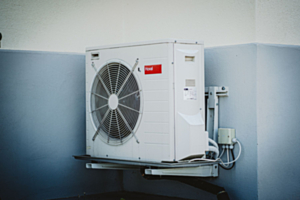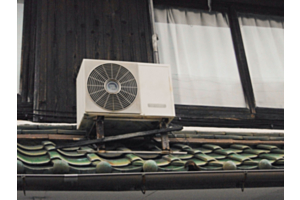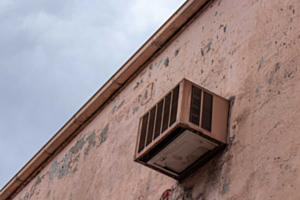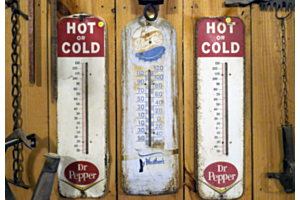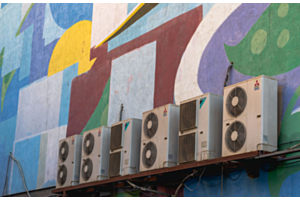Blog
-
February 07, 2023
A mini split heat pump is a phenomenal solution for a more comfortable home or commercial building, but this is your first time using something beyond standard HVAC. You want to do it right, so how do you operate one of these systems?
We’ve compiled our best tips and pointers in this article, so make sure you check it out!
Open Some Doors
Although closing a door will trap in warmth, that only benefits that one room. If you open the doors in your home after turning on your mini split heat pump, the warm air can spread more effectively throughout the rest of the house.
Some estimates suggest that this can make a difference of up to 5 degrees Fahrenheit in your home’s temperature. It’s very much a small thing that can lead to big changes!
Let the Sun Help
How bright do you keep your home during the day? If you have the curtains pulled tighter than Fort Knox, you’re blockading the sunlight and
-
January 31, 2023
You love how your mini split remote control makes turning the unit on or off incredibly easy and efficient, but lately, your mini split has been having a problem. It keeps turning itself off rather than you doing it yourself.
What is going on here?
Let’s assess some of the areas that might have gone wrong.
The Mini Split Is Short Cycling
Short cycling is a phenomenon that can occur in air conditioners and mini splits alike. These units are supposed to cool for at least 10 minutes on average, but when they're short cycling, they don’t.
The compressor keeps turning on and off as a consequence, which means your mini split turns on and off right along with it.
The Thermostat Is Malfunctioning
Any type of issue with the mini split’s thermostat is worth paying attention to. If the thermostat reads the temperature incorrectly, after all, then that’s going to impede how your mini split runs.
-
January 24, 2023
Ductless mini splits are an efficient heating and cooling solution for many homes, but when is it appropriate to choose a mini split?
Here are some scenarios in which a mini split is the perfect fit!
To Heat or Cool Existing Rooms in the House like Garages or Attics
Basements, garages, and attics, although they vary widely in size and function, often share one thing in common. That is, none of them are insulated!
So what does this mean for you, the homeowner? Spending time in any of these rooms is going to be an unbearable thought for most of the year. In the summer, the rooms get too hot, and in the winter, freezing cold.
Ductless mini splits are a convenient option for these parts of your home. You can create customized cooling and heating solutions without ductwork.
Whether you use your garage, attic, and basement primarily for storage, recreational areas, or even as secondary bedrooms, you’ll get the most
-
January 17, 2023
As the owner of a ductless mini split system, the words “short cycling” are two you never want to hear. Today’s post will explain what short cycling is, why it’s detrimental to your mini split, and how to prevent it.
What Is Mini Split Short Cycling?
Short cycling is not a phenomenon exclusive to ductless mini split systems. Any central air conditioner can also short cycle.
On average, a cooling cycle is supposed to last about 10 minutes. At that point, your mini split will turn off, including the indoor air-handling unit and the compressor in your backyard.
When short cycling occurs, the average cooling cycle duration is lessened. It’s not even close to 10 minutes.
Short cycling has many causes.
If your mini split is too large for your home, then short cycling can occur. The reason is that the mini split has too much cooling power, so it cools the room so fast that it can shut down in well under 10 minutes.
-
January 10, 2023
Ductless mini splits are amazing for a lot of things, like efficiently cooling and heating your home, saving money on your utility bills, operating quieter than traditional HVAC, and being better for our planet.
Yet one thing they don’t do is actively tell you how much refrigerant is left in the unit. Usually, it’s not until a ductless mini split begins having problems that most people realize that something might be wrong with the level of coolant.
Before it gets to that point, here are some symptoms to keep an eye out for that indicate you’re running out of refrigerant.
Liquid Is Leaking
Drip, drip, drip. What is that liquid you can hear coming out of the compressor outside that has formed a puddle around the concrete slab the compressor is on?
That would be liquid air.
Wait, what? Allow us to explain.
You see, when a mini split has low refrigerant levels, the compressor’s air supply is a lot likelier
-
January 03, 2023
A well-maintained mini split usually doesn’t succumb to many issues, but when and if it does, it’s often one of the problems we’ll discuss today.
The good news is that all these issues are incredibly common and thus easily diagnosed and repaired by your mini split technicians and their team.
Let’s take a look!
Bad Wiring
If your mini split remote works only sporadically even when you’re aiming it right at the unit, this comes down to more than a low-quality signal. The mini split and remote can’t communicate well, and that’s a wiring issue.
You might want to bring out your mini split team to double-check that all the wiring was connected properly during installation. If not, there is no better time than the present to tighten everything up!
The Mini Split Won’t Power On
Your mini split system was
-
December 27, 2022
When you first invested in a ductless mini split system, you weren’t sure if it would be a much more efficient option than your traditional HVAC you were using like a furnace or air conditioner.
Now, many months later, you can’t imagine going back to your old, outdated HVAC units.
The only problem is, when you got ductless mini splits installed, you didn’t add that many indoor air-handling units. You kind of want more. How do you add extra mini splits to your home?
The first thing you should do is measure out the square footage of the space that you’d like to be cooled or heated.
You might only want a couple of hundred additional square feet of heating or cooling or several thousand feet. That depends on the size of your home or building.
Next, you need to divide the square footage into zones. Remember, a zone doesn’t have to be an entire room, but simply a part of your home or commercial building with unique heating and cooling needs.
Based
-
December 20, 2022
When planning for a ductless mini split system, one of the considerations to keep in mind is size. That’s especially paramount if you don’t necessarily have the biggest backyard or a lot of space in your home or commercial building.
Naturally, you have to ask, how long is a ductless mini split?
Well, a mini split system is comprised of various parts.
One of these is the compressor, which is sometimes known as the condenser. This is the outdoor unit that’s connected to the various indoor units via a series of wires.
The compressor contains coolant, coils, and other components that allow it to convert the air pumping through the system from hot to cold or vice-versa.
A compressor is fairly sizable, with an average depth of a foot and a width of two and a half feet.
You have to know the precise measurements of your compressor before the mini split technicians arrive to install your system, as you’ll need to pour or purchase a concrete pad for
-
December 13, 2022
You’re getting a new ductless mini split system installed in your home soon. You can’t wait for more concentrated heating and cooling without the high energy bill costs.
You’d love to begin using your mini split as soon as it’s all set up and wired. Does a mini split come pre-charged?
Yes, indeed, most mini splits on the market these days arrive at your doorstep pre-charged.
By the way, if you don’t know what we’re referring to when we say a mini split is (or isn’t) pre-charged, this is a type of more expedient mini split setup.
You see, when installing units like a ductless mini split, a technician and their team have to attach the necessary refrigerant lines. Then they have to charge the system to ensure optimal performance once you turn the mini split on.
Pre-charging skips all that. All the parts that need to plug in connect seamlessly, the
-
December 06, 2022
Your mini split has frozen solid.
You might find this more plausible if it was the middle of winter, but it isn’t. It’s summertime and quite hot outside, so why is your mini split system a block of ice?
There are several reasons why a mini split will freeze up like this, actually. In today’s post, we’ll go over them all.
Slowed Airflow
How fast is the air moving through your ductless mini split system?
If it’s not speedy enough, then your mini split can freeze up.
What happens is the evaporator in cooling mode, within the mini split will decrease in temperature to such a degree that they’ll freeze.
Typically, a mini split’s coils are suspended in a state that’s about freezing but not quite. That’s because the coils consistently receive air that crosses over them whenever your mini split is operating.
At


